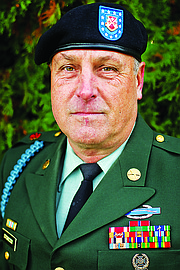The art of intelligence gathering
News reports let us follow the war in Ukraine, showing movements of military vehicles and troops on both sides. But how do commanders know where to maneuver their assets and what are their armies supposed to do?
Upper-level command posts gather intelligence reports from the field and evaluate the information reported. So, here are a few ways to collect intelligence from the battlefield.
Satellites are a significant contributor to gathering information on the ground. Wide-angle, powerful camera lenses capture and report everything they see, from sizable countryside images to more focused regions, including towns and villages. Moreover, military use of satellite imaging is essential to assess the static and dynamic movement of equipment and troop buildup, as when Comrade Putin moved his army into position to invade Ukraine.
AWACS (Airborne Warning and Control System) surveillance aircraft is an “eye in the sky.” The Boeing E-3 Sentry has a distinctive rotating radar dome (rotodome) that monitors an assigned area and provides movement information to commanders of air operations and needed information to ground commanders.
Drones of all descriptions fly over the battlefield and send a video feed of their search area. In addition, commanders can specify particular areas of activity to monitor. The General Atomics MQ-9 Reaper has been in service since 2007 and is probably the most recognized in the family of drones.
It is an unmanned aerial vehicle (UAV) used not only by the U.S. Air Force but also by the U.S. Customs and Border Protection service. It is remotely operated and considered a hunter-killer surveillance aircraft with an altitude of 50,000 feet and has an endurance of 14 hours, fully loaded with various missiles and laser-guided bombs.
Human intelligence is perhaps the most expeditious way to gain information when thinking of spies and confidential informants in movies and television shows. In a war zone, intel reports can come from local people. A noteworthy example is the rescue of 19-year-old Private First Class Jessica Lynch in Iraq during the 2003 Gulf War.
PFC Lynch was a supply specialist with the 507th Maintenance Company in the invasion of Iraq. Her convoy made a wrong turn near the city of Nasiriyah. Instead of detouring the town, they turned into it, where Iraqi forces ambushed them. A rocket-propelled grenade (RPG) hit her Humvee, causing severe injuries.
She was captured and held as a prisoner of war in a hospital in Nasiriyah. Her whereabouts were unknown until an Iraqi lawyer named Mohammed Odeh al Rehaief discovered her in the hospital. He walked six miles to a U.S. Marine checkpoint and told them where she was. Military Special Forces units launched a rescue mission, and the nighttime raid on the hospital successfully retrieved Lynch and the bodies of eight other American soldiers.
The success of military operations relies on receiving accurate and timely information. Therefore, purposely or passively, gathering intel is the key to planning operations. For example, the rescue of PFC Lynch exemplifies timely information that came “out of the blue” from a concerned lawyer hearing of Lynch's capture.
Likewise, commanders planned “The Gulf War” invasion by obtaining intelligence information about Saddam’s army and military targets in the country. As a result, the coalition forces successfully liberated Kuwait following an operation order based on extensive intelligence gathering.
The success of the Ukrainian military against Comrade Putin’s army is not coincidental. Commanders plan and calculate operations orders based on the intel they receive. Hopefully, Putin will withdraw his army and let peace prevail before Ukraine destroys his whole army. Did anyone mention an airstrike of a few A-10 Warthogs striking columns of Russian tanks in Ukraine?
• • •
Jack Evensizer is a resident of Dalton Gardens and a veteran of the U.S. Army Infantry.



